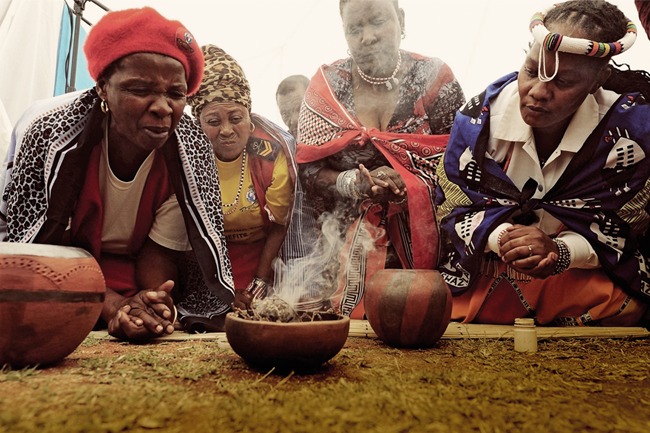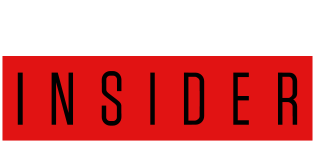Walking out of Cape Town Station towards City Hall, you are more than likely to encounter a small team of direct marketers handing out A6-sized paper fliers.
‘Bring back lost lover!’ they promise. ‘Get promotion you have desired for a long time at work!’ As you cross Strand Street towards the Grand Parade, the Southeaster blows the paper from your hands before you’ve really had a chance to decide whether the doctor advertising those services is a real healer or a charlatan… And whether he offers anything that Western medicine – and the handful of pharmacies that dot the streets around the station – cannot do better and safer.
Maybe it’s the outrageous promises; perhaps it is the far-from-flattering media coverage. Whatever the reason, traditional healers are hugely misunderstood by people raised on Western medicine – yet their influence reaches from Africa’s southernmost city, across the continent and right into the most remote parts of its rural heartland.
‘Traditional health practitioners are an important source of healthcare for many Africans, with an estimated 80% of people seeking treatment from them,’ Matshidiso Moeti, director of the WHO’s regional office for Africa wrote in a recent statement.
However, she added, ‘there is no doubt that proper regulation is essential to the provision of quality, safety and effective healthcare products and services. This is particularly important especially in the rural areas where traditional medicine is sometimes the only affordable and available source of healthcare’.
In South Africa alone, indigenous traditional healers are estimated to outnumber Western-trained doctors 10 to one (250 000 to 25 000).
The WHO is one of several official bodies trying to regulate traditional health practice. Last November, South African Health Minister Aaron Motsoaledi published proposed regulations in the country’s Government Gazette, requiring anyone wishing to be a sangoma (diviner) or inyanga (herbalist) to apply for registration, pay a fee to the Traditional Health Practitioners Council, and be at least 18 years old. The proposal was met with outrage from both sides of the Western/traditional divide.
Western medical experts argued that these regulations would formalise and legitimise quacks and charlatans who have no official medical training; while many sangomas and inyangas accused Motsoaledi of trying to ‘Westernise’ their traditional African practices. It didn’t help that the gazette was available only in English – thereby excluding most of the healers concerned from providing appropriate feedback.
The debate does, however, raise a valid question: on a continent where so many people still use traditional healers as their primary medical practitioners, what role do Africa’s traditional healers play in a world supposedly dominated by Western medicine?
‘The ideal would be that these two systems work together but as it stands, a lot of patients have reservations about Western medicine’
Phephisile Maseko, national co-ordinator for South Africa’s Traditional Healers Organisation, bristles when she’s asked the question. ‘Western medicine has tried, using government and the media, to push traditional healers aside,’ she says. ‘If it were up to them, they would have wished us away a long time ago. But healers keep on. Our struggle is rooted in the people, and it’s part of people’s culture.’
Maseko’s response says a lot about the mutual distrust between traditional healers on the one side, and Western medicine on the other. It’s not a new debate. In 2003, concerns were raised in South Africa’s Parliament that the Traditional Health Practitioners Bill would result in enterprising sangomas handing out sick notes to give their patients time off work.
Yet along the way, there has always been an understanding that both sides need to find a way to work together, for the benefit of the patient.
The WHO’s claim that 80% of Africans seek treatment from traditional healers is almost certainly an over-estimation – at least when it comes to emergency treatment. But Maseko insists that more and more patients are using traditional medicine either to complement or to replace Western medicine when it comes to chronic illness.
‘Contrary to Western medicine thinking that people are only using one formula, a lot of patients are using both,’ she says.
‘Western drugs are very toxic, so patients have resorted to diluting those drugs with African traditional medicine. The ideal would be that these two systems work together but as it stands, a lot of patients have reservations about Western medicine.
‘Every day, patients are realising that the Department of Health and Western medicine are friends, and are divorcing them from their way of life. So that is why there is such an influx of clients coming back to us.’
The danger here is that traditional medicine is plant-based, and – as Tinus Dippenaar of the University of Pretoria’s oral and dental hospital pointed out in an article written for the Conversation, the interaction between herbal medicines and conventional drugs is not yet fully understood.
‘For patients who fail to disclose using herbal medicines before they go into surgery, the side effects can be dire,’ he wrote, citing research from the New England Journal of Medicine showing that 70% of patients don’t tell the doctors and physicians treating them that they are also using herbal medicines.
‘At the South African Society of Anaesthesiologists, we have anecdotal evidence of patients not disclosing their use of herbal medicines such as omega oils, arnica tablets, evening primrose oil and St John’s wort. In most instances, it meant the physicians had to return to theatre because of their patients’ excessive bleeding.’
Here, the two sides of the divide are actively working against each other, with traditional medicine counteracting the effects of Western medicine. But to understand the positive role that Africa’s traditional healers can play in emergency procedures, one first has to comprehend the general approach of traditional medicine.
When asked to explain how a traditional healer would handle a basic medical emergency situation, such as childbirth, Maseko gives a response that on the one hand fails to answer the question yet, on the other, demonstrates how that wasn’t a question a traditional healer would really ask.
‘Before a couple conceives a baby, they start with a healer,’ she says. ‘They first visit a healer, together as a couple, to see whether or not it is okay for them to think of having a family. Is the husband a consistent husband? Can he be relied on to be a good husband and father? Is the wife a good wife?
‘So the role of the healer is that of counsellor. Then, after having counselled the couple, the healer will start administering medicines that assist in fertility. That programme will probably last about six to eight months. Then once the wife tells the husband “I think I’m pregnant” – before the couple go to a clinic – they will come back to me, the healer. At that point I will start to administer medicines that are good for the child’s nutrition.’
By not directly answering the question, Maseko does indeed answer it. Modern (Western) medicine and traditional medicine both contribute to healthcare, but both have their limits. Margaret Chan, WHO director-general, underlined this during her opening remarks at the International Forum on Traditional Medicine in Macao, China last August.
‘For many millions of people – often living in rural areas of developing countries – herbal medicines, traditional treatments and traditional practitioners are the main, sometimes the only, source of healthcare,’ she said. ‘Many poor people with severe disease do not visit clinics or emergency wards precisely because none are available or accessible.
‘Traditional medicine is the default, not the first choice. It is the only option available.’
She added that, in many cases, traditional medicine is the default option simply because Western medicine has nothing to offer.
‘We witnessed this situation most vividly during the Ebola outbreak in West Africa,’ she said. ‘For the thousands of people infected and their doctors, modern medicine had nothing to offer – no vaccines and no treatments beyond supportive care. Patients and their families understandably preferred care in homes or by traditional healers to isolation in treatment centres where few left alive.’
Across Africa, governments and healthcare services then have just one sensible remaining option: to embrace traditional healers, acknowledge their great access to the continent’s population and use this to provide the emergency treatments that millions of Africans desperately need.



